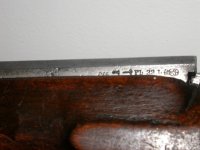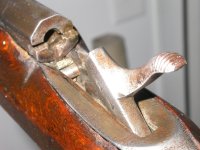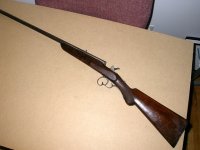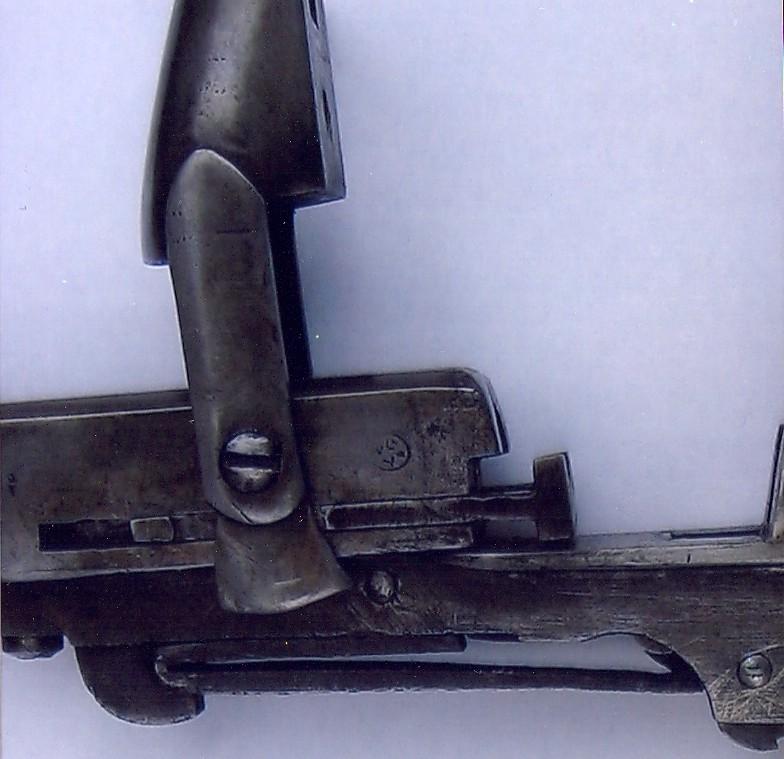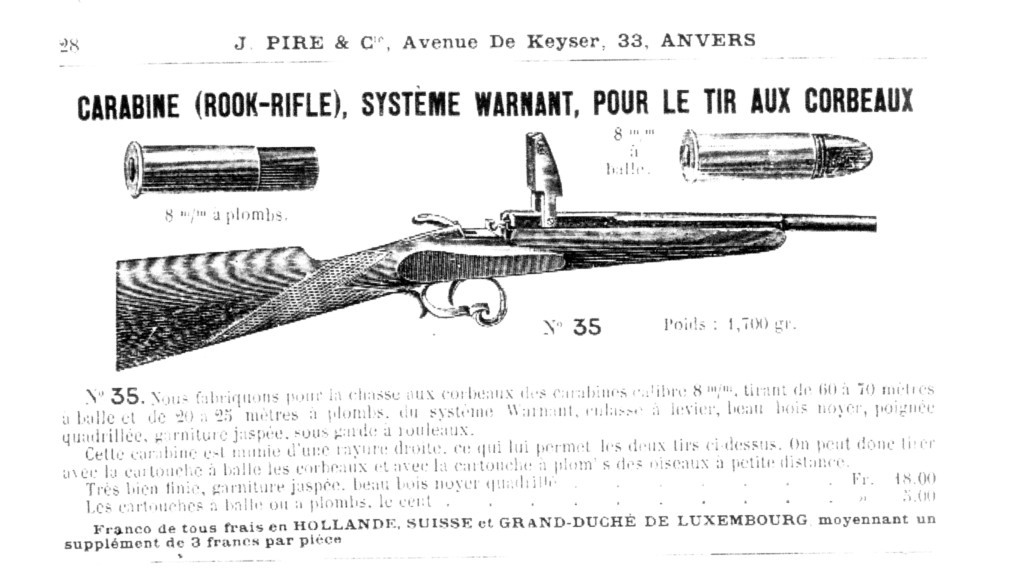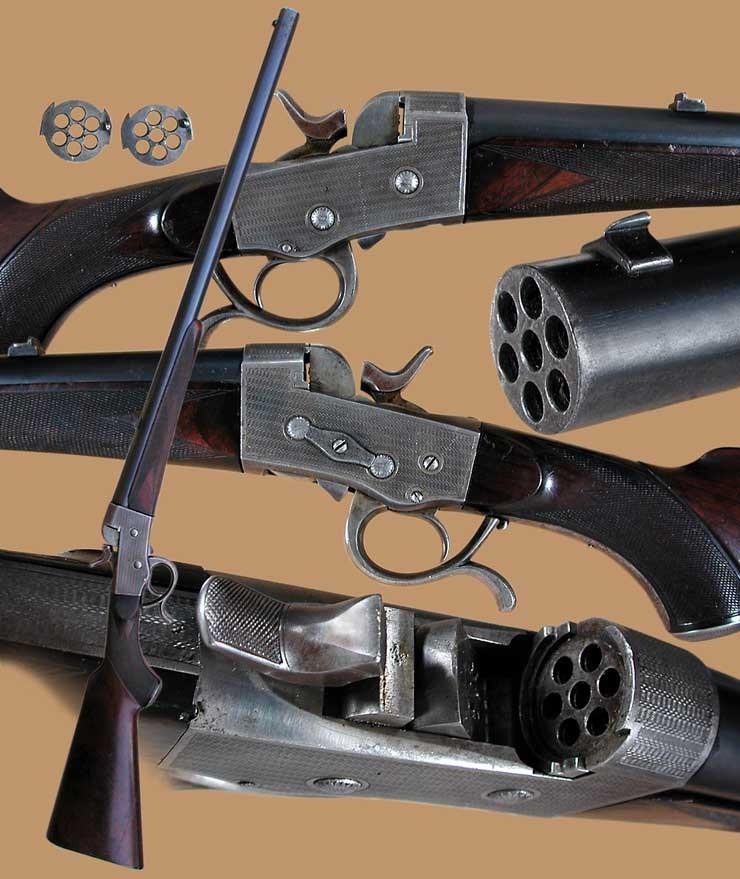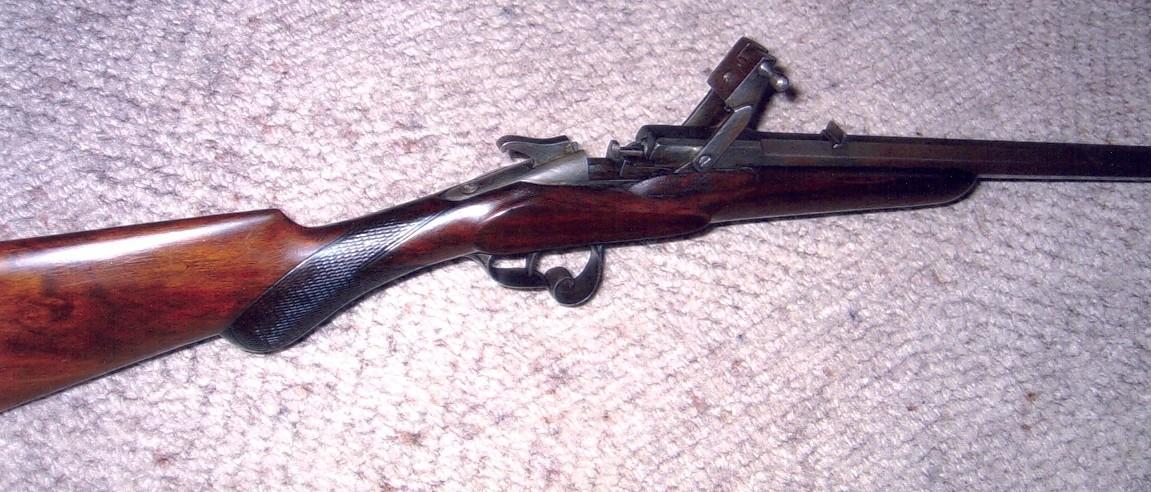Hi you all
Long ago I've inherited a rifle from my grand-mother who got it by her grand also and, to my estimation,it dates from the mid 1800's.
It's 37 inches long overall, has a hexagon barrel. Under the barrel is punched 2526 Belgium. Near the hammer are some marks and characters. They begin with what seems to be a crown, then a "R" then 2 other marks and "FL 22 L" and it ends with a crowned balloon in which there's "E" and 'LG" under the "E". I dismanteled it and found a "MG" mark under the barrel.
It shoots 22 Long ammunition.
I fired it long ago and found that when the bullet is fired the chamber opens and the empty shell is automatically thrown out.
Unfortunately that time, the cover with the firing pin broke. I saw that it had been broken before and had been welded with brass. Now after some 45 years, I've lost that broken cover and I wish to had one made again but I can't remember the exact look it had.
Can someone tell me more about that rifle and provide me with a closeup image of the device or a drawing of it or provide a link to a site or a book that could help me with that ?
Thanks
Here are some pictures.
Long ago I've inherited a rifle from my grand-mother who got it by her grand also and, to my estimation,it dates from the mid 1800's.
It's 37 inches long overall, has a hexagon barrel. Under the barrel is punched 2526 Belgium. Near the hammer are some marks and characters. They begin with what seems to be a crown, then a "R" then 2 other marks and "FL 22 L" and it ends with a crowned balloon in which there's "E" and 'LG" under the "E". I dismanteled it and found a "MG" mark under the barrel.
It shoots 22 Long ammunition.
I fired it long ago and found that when the bullet is fired the chamber opens and the empty shell is automatically thrown out.
Unfortunately that time, the cover with the firing pin broke. I saw that it had been broken before and had been welded with brass. Now after some 45 years, I've lost that broken cover and I wish to had one made again but I can't remember the exact look it had.
Can someone tell me more about that rifle and provide me with a closeup image of the device or a drawing of it or provide a link to a site or a book that could help me with that ?
Thanks
Here are some pictures.
Attachments
Last edited:

